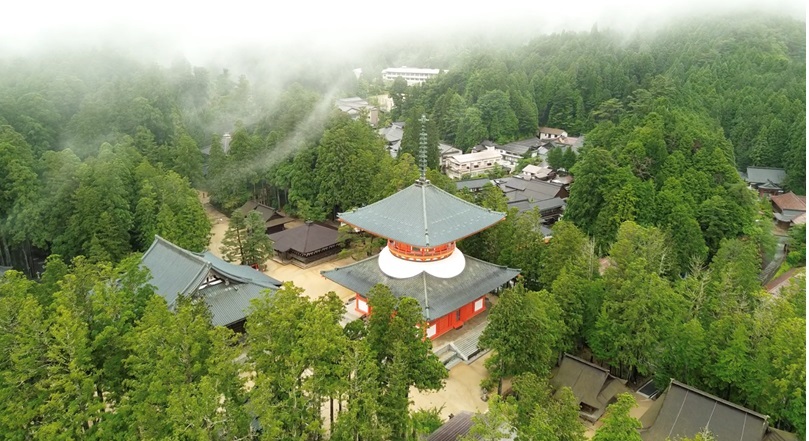
This is the third blog post in a series written by the 2024 recipients of the Duke University Libraries Summer Research Fellowship for LIFE Students. You can also read the first post and second post. Lhamo Dixey is a senior majoring in Religious Studies and Political Science.

Tantra is undoubtedly one of the most enticing yet controversial practices within the study of Asian religions. Its deeply profound insights are often obscured by colonial misrepresentations of Asia. Despite this, Tantra has thrived throughout Asian history since the first millennium of the common era. In fact, no form of Asian religion has existed without Tantric components, and hundreds of religious sects view it as an essential practice within their belief systems.
At its core, Tantric practice is an attempt to access and harness the energy of the “ultimate,” the perpetual flow of divine and demonic, human and animal action that circulates throughout the cosmos. Tantric practitioners channel this free-flowing energy from the “ultimate,” focusing it into a three- or two-dimensional template known as a “mandala.” While mandalas are varied and multifaceted in representation, they all share a commonality: they are sanctums—sacred spaces marked off for practitioners to traverse multiple worlds, engage directly with deities, and ultimately dissolve themselves into the universal unity that forms the fabric of life.
The word “mandala” is derived from Sanskrit, encompassing a range of meanings beyond its literal translation as “disk” or “circle.” Manda means “essence,” and la means “seizing,” so together, “mandala” signifies the “enclosure of essence.” One of the earliest references to “mandala” is found in the Rig Veda (1500–1200 BCE), where it denotes the primary sections of the text, much like chapters containing grouped verses. Another early conceptualization is found in Kautilya’s Arthashastra (150 BCE–50 CE), where the mandala is presented as a strategic framework for political affairs, enhancing effective governance and consolidating a ruler’s power. In this political model, known as the rajamandala, the ruler is positioned at the center, establishing a relational hierarchy with surrounding kingdoms and territories. Neighboring kingdoms are seen as direct rivals, forming an inner circle of competition and threat, while the kingdoms beyond this inner circle constitute an outer circle of potential allies. This concentric web of alliances and adversaries mirrors the vast array of worlds and realms depicted within the mandalas of Esoteric Buddhism.
I spent many childhood summers at my grandfather’s retreat center for the study of Tibetan language and Buddhism—one of the only manifestations of a Tantric temple in the West—tucked away in the Northern California forest. My fifth-grade year brought an even deeper immersion into Buddhist life when my parents, guided by my grandfather, moved to Bodhgaya to establish Buddhist communities in India. Here, I witnessed a distinct manifestation of Buddhism through the lens of monastic devotion. We practiced and prayed, meditated, reflected, and engaged deeply with sacred texts. My upbringing was saturated with a multiplicity of religious experiences, fostering in me a profound desire to uncover the vibrantly diverse religions of our world.
It was my grandfather’s commitment to preserving his lineage that inspired me to formally study religion at Duke. This path led me to become an Ambassador for the Religious Studies Department, advocating for a robust Asian Religions curriculum, and ultimately to pursue an independent study on the sacred symbolism of temple architecture. My goal has been to explore the transformative role of the temple as a medium for divine engagement.
During my time at Duke, the class “Asian Religions and Knowledge of the Other” introduced me to the treasures of Japanese Shingon Buddhism—the last remaining manifestation of esoteric Tantric Buddhism outside of Tibet. Immersed in its profound symbolism and meaning, I became captivated by the intricate geometric designs and patterns within Shingon temples, which depict realms, worlds, and universes, and the chaos and order of the life force. These temples represent a cosmic grid from which practitioners connect to particular deities, gods, goddesses, or kami, playing an indispensable role in the rituals of Buddhism and Shintoism.
Visiting ancient temples in Japan brought this narrative to life, revealing a vibrant and enduring lineage of practitioners who continue their sacred traditions. My journey led me to Koyasan, the revered birthplace of Shingon Buddhism, where I fully experienced monastic life. Here, I was not just an observer, but a participant in the profound rituals practiced for centuries. I had the rare privilege of sitting in fire pujas, ceremonies of intense spiritual significance, and witnessing the daily lives of monks who embody the teachings of their lineage with unwavering devotion.
Within the temple walls, I engaged in meditation and movement, growing closer to my inner self. The monks, with their deep wisdom, welcomed me and shared their insights. Our conversations spanned the architecture of sacred spaces as divine mediums to elusive philosophical inquiries like, “Where is the mind?” These dialogues, rich with wisdom, offered a glimpse into the depths of their spiritual practice and the timeless questions that guide their journey.
My exploration of Shingon Buddhism extended to the University of Tokyo, where I had the honor of engaging with distinguished professors specializing in the study of mandalas. Their teachings provided me with a deeper understanding of the rich history and symbolic complexity of the mandala, enhancing my appreciation for the sacred architecture I had encountered.
Leaving Japan, I carried more than just newfound knowledge; I left with a profound sense of peace and harmony, an echo of the timeless wisdom I had encountered throughout my journey. This experience reaffirmed my belief in the transformative power of sacred spaces and the enduring relevance of these ancient traditions in our modern world.

